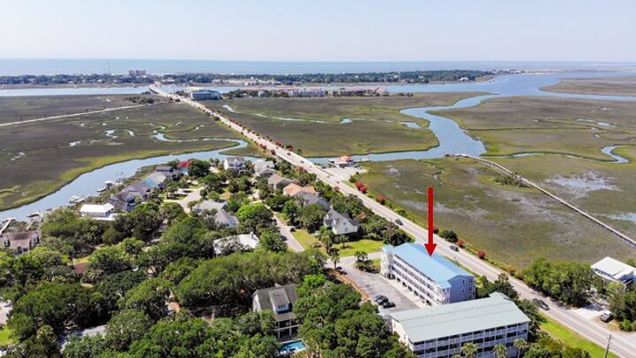
Charleston Real Estate Boom: Why Investors Are Racing Here in 2025
Charleston Market Report – In 2025, Charleston has become one of the hottest real estate markets in the United States. Once a charming historic town known for its cobblestone streets and waterfront views, Charleston real estate is now attracting national and international investors at unprecedented speed.
The city is seeing record-breaking home sales, rapidly appreciating property values, and major commercial development. From tech entrepreneurs to institutional investors, everyone seems to have their eyes on Charleston. But what’s driving this boom, and why is it happening now?
Over the past three years, Charleston’s population has grown faster than any other mid-sized city in the Southeast. Remote work flexibility, a high quality of life, and favorable tax policies have drawn in waves of newcomers. According to the latest census updates, Charleston County’s population increased by 12 percent since 2022.
This population surge has placed immense pressure on housing supply, creating bidding wars for residential properties across the metro area. Neighborhoods once considered “up and coming” are now commanding premium prices, and new developments can barely keep up with demand.
Real estate agents report that homes are selling within days, often with multiple offers over asking price. As a result, investors see strong potential for both short-term returns through flipping and long-term gains via rental income and appreciation.
Charleston’s real estate boom is also being fueled by a unique combination of economic drivers.
First, the tech sector is expanding rapidly. Charleston has quietly built a thriving ecosystem of startups, logistics companies, and software firms, earning it the nickname “Silicon Harbor.” Remote-friendly jobs and digital innovation hubs have made the city a magnet for young professionals with disposable income.
Second, tourism remains a powerful force. Despite global economic uncertainty, Charleston has retained its crown as one of America’s top travel destinations. In 2024 alone, tourism contributed over $12 billion to the local economy, boosting the hospitality and short-term rental markets.
Third, Charleston’s universities and healthcare systems are attracting students, researchers, and medical professionals from across the country. This influx of talent has raised the demand for urban rentals, student housing, and suburban family homes alike.
While the historic downtown peninsula remains a coveted address, savvy investors are looking beyond the obvious. Several key neighborhoods are seeing accelerated growth and property value spikes in 2025.
North Charleston is undergoing a full-scale transformation. With new retail centers, infrastructure upgrades, and affordable housing projects, the area has become a prime target for first-time buyers and rental property investors.
West Ashley continues to benefit from its proximity to downtown and recent zoning changes that allow for mixed-use developments. Investors are finding opportunities in older properties ready for renovation, as well as new townhome and condo builds.
Johns Island and James Island are drawing in eco-conscious buyers and developers thanks to their natural beauty and increasing access to services. These areas are ideal for vacation properties, second homes, or short-term rental income.
Read More: This New Hot Pilates Trend Is Burning Calories and Breaking
It’s not just residential properties that are booming. Commercial real estate in Charleston is also seeing explosive growth, especially in the logistics and industrial sectors. With its strategic port location and expanding infrastructure, Charleston is attracting warehouses, distribution centers, and shipping-related businesses.
The demand for office space is shifting, too. Hybrid work has reduced the need for large corporate campuses, but there’s rising interest in flex workspaces, co-working hubs, and mixed-use commercial districts. These offer walkable amenities and appeal to small and medium-sized enterprises looking to base operations in Charleston.
Retail development is evolving as well. Local entrepreneurs are opening boutique shops, cafes, and experiential stores in revitalized urban corridors. Investors are backing these ventures with confidence, knowing Charleston’s foot traffic remains strong year-round.
Charleston’s real estate market in 2025 is competitive, but still offers attractive entry points. Experts suggest that smart investing requires speed, local knowledge, and a long-term perspective.
Rental income potential remains strong, especially in multifamily units and properties near schools, medical centers, and tech offices. Appreciation forecasts remain bullish, with analysts projecting 7 to 10 percent annual growth across key neighborhoods for the next three years.
However, the market is not without risks. Rising insurance premiums, stricter zoning enforcement, and interest rate fluctuations are all factors that investors must monitor. That said, most signs point toward continued expansion, especially as Charleston doubles down on infrastructure spending and affordable housing solutions.
Charleston is no longer a hidden gem. It is a national hotspot for real estate opportunity. The combination of lifestyle appeal, economic momentum, and housing demand has created a perfect storm for property investors.
As the city grows into its new identity as a modern hub for innovation and culture, real estate in Charleston will remain a powerful engine for wealth building. Whether you’re buying your first rental, flipping a coastal home, or developing a commercial space, Charleston in 2025 is a market worth racing into.